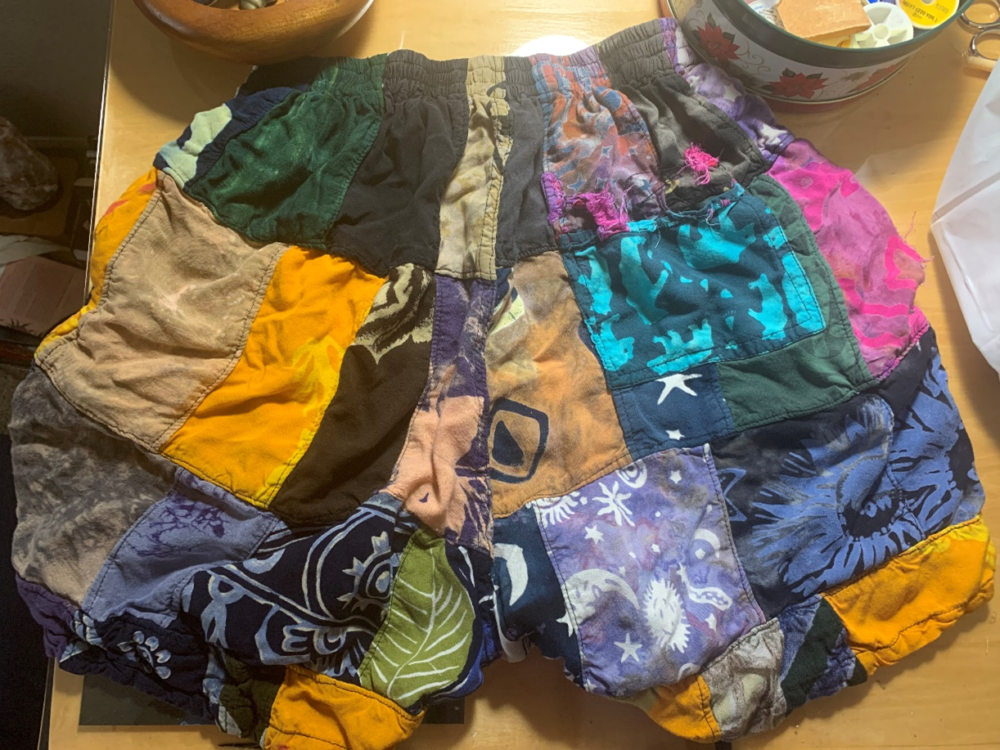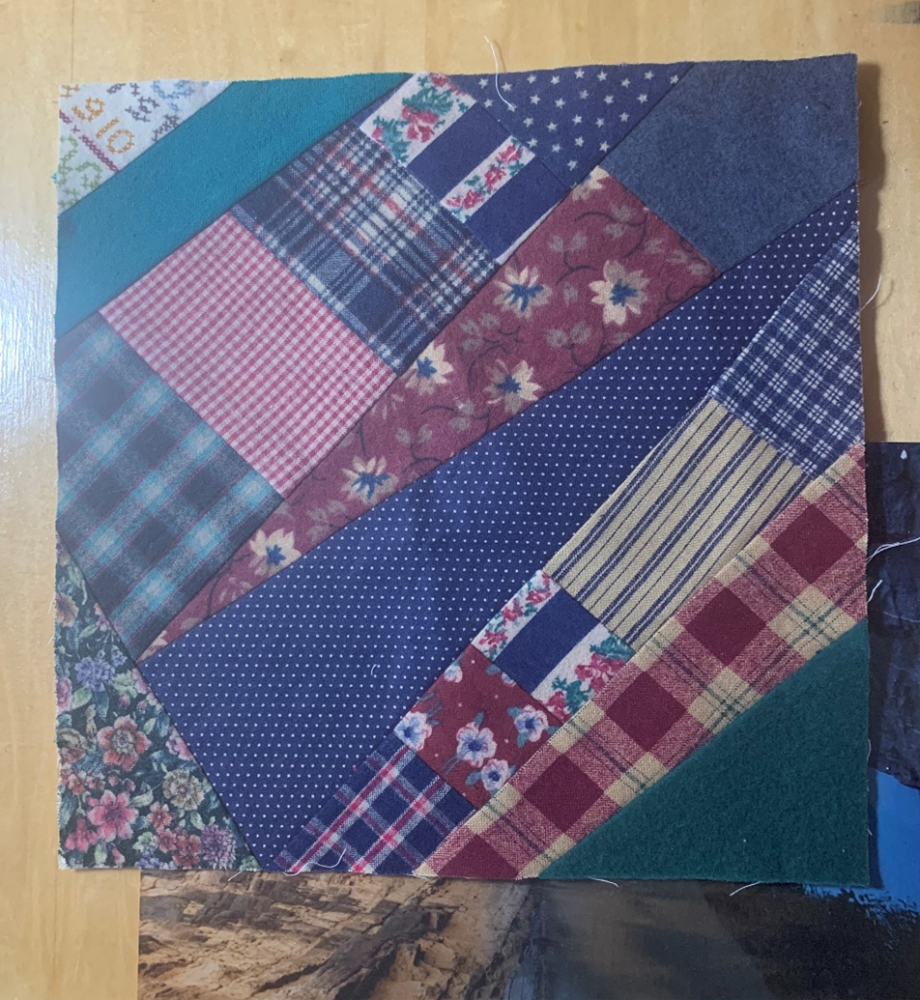Patchwork Aesthetic Exploration

The Patchwork Aesthetic ranges from professionally made, highbrow, works of art to strictly utilitarian pieces. Often it is a mix of both, providing something with tangible uses while still being aesthetically pleasing. At its core, the Patchwork Aesthetics relies highly on sewing which can be traced back to around 25,000 years ago. It was a necessity in cold climates to fabricate clothing and bedding out of many animal pelts both big and small. Even just a few centuries ago the same held true, the image below shows a native American blanket made from rabbit pelts:

This aesthetic also evolved overtime manifesting itself as quilting in Europe and European Colonies like India. These quilts were often given as gifts for events such as weddings or other celebrations from people of a higher class. Since there were not sewing machines at this time quilts would take a long time to produce. This made many people share the work and would often act as social gatherings. An example of a British quilt is shown below:

As with many other concepts the Patchwork Aesthetic began out of necessity and eventually became a sort of luxury item for those who could afford it. However, that is not to say that member of the lower class would not still use this concept out of necessity. It was often cheaper to patch old clothes than buy new ones.
In more recent decades globalization has led to the phenomena of fast fashion. In this process other country’s labor, primarily in southeast Asia, is exploited for capitol gains. While this in and of itself is a major issue, waste is also a dire consequence. This waste is one of the major inspirations for my Upcycle project. The picture below illustrates this issue in Shanghai:

I have been doing Martial Arts since I was young and have consequently had many different uniforms, Gis, as I grew. However, I never threw those uniforms away; thinking I could one day find a use for them. The Upcycle Project is a great chance to repurpose all the uniforms I have and not contribute to textile waste. I want to project these ideas of the Patchwork Aesthetic in a utilitarian project while maintaining the traditional Asian inspiration found in my source material of the Gi.
This is not an original idea in taking old textiles and repurposing them into something that fits the Patchwork Aesthetic. Companies like Farewell Frances repurpose quilts into high quality clothing. One of their products can be seen in the picture at the top of this blog post. Some of the inspiration for me choosing this aesthetic for my Upcycle project also comes from things I already own. The picture below is a pair of shorts made from random scrap textiles:

While I did not make these myself, they are great example of the aesthetic I am reach for in my project. I also have a few small, quilted mat that I use as decorative pieces. An example of this is shown in the following image:

Sources:
- https://www.jonessewandvac.com/sewing/the-history-of-sewing/#:~:text=Although%20some%20ancient%20sewing%20needles,official%20from%20the%20Han%20Dynasty.
- https://www.vam.ac.uk/articles/an-introduction-to-quilting-and-patchwork#:~:text=The%20history%20of%20quilting%20can,England%20in%20the%2013th%20century.
- https://www.investopedia.com/terms/f/fast-fashion.asp#:~:text=Fast%20fashion%20is%20the%20term,clothing%20at%20an%20affordable%20price.
Picture 2: https://americanindian.si.edu/static/exhibitions/infinityofnations/california-greatbasin/072281.html
Picture 4: https://www.thatsmags.com/image/view/201704/sustainable-fashion-1.jpg
Picture 5: Original Image
Picture 6: Original Image

4 Comments. Leave new
Hi Michael, this is a super interesting aesthetic to explore. There is a lot to unpack here, not only in terms of the art/fashion, but also in terms of the societal/class implications that come along with different usages of patchwork. I think you did a great job of touching on everything you needed to in order to help the readers understand the different sides of this aesthetic. This sounds like a very cool idea for your upcycle project. Do you think you will be shooting for a more high-class/fancy patchwork aesthetic, or more of a utilitarian aesthetic?
Thanks for the kind comments! As for my upcycle project, I plan on aiming for a more utilitarian aesthetic. That being said, I still want my project to be thoughtful in the sense of a color scheme and over all style. So in reality, my upcycle project won’t be strictly utilitarian.
I liked your exploration of the history of the patchwork aesthetic, and how it came to be a prominent fashion statement among both upper and lower social classes. There is an aesthetic in car culture called harlequin, which I find very similar to this aesthetic. A harlequin car is a car that has many differently colored body panels, including the doors, hood, roof, and tailgate. I thought these were fairly comparable because while some harlequin cars are done professionally and shown off at high end car shows, others look that way simply because that was the color part the owner could find. I think the contrast of so many different colors and patterns next to each other makes this style fun.
Hi Thomas, thanks for your comment. I had honestly never thought about projecting this aesthetic to other media such as cars like you suggested. I think it is fascinating to think about what other subjects have experienced the Patchwork Aesthetic besides textiles as I explored. Possibly even seemingly random stickers on a water bottle could be included under this umbrella.